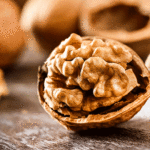By Shelby Stoner, MS, PHASE IV Exercise Physiologist
If you’re reading this article, I’m sure you may know someone on anti-hypertensive medication, or you may be on it yourself! Hypertension, or high blood pressure, is among the most common chronic medical conditions, affecting more than 65 million individuals in the United States alone. Based on new standards set by the American Medical Association, American College of Cardiology, and the American Heart Association for diagnosing hypertension in 2017, almost 46% of Americans now fall into the high blood pressure category.
What Exactly IS Blood Pressure?
Every time our hearts contract, it creates a pressure that forces blood through blood vessels around the body. Blood pressure readings tell us exactly how much force is being pushed against the artery walls, measured in millimeters of mercury (mmHg). When measuring blood pressure, there are two different measurements that are taken. The first (top) number, the systolic pressure, tells us the amount of arterial pressure exerted when the heart beats. The second (bottom) number, the diastolic pressure, indicates the pressure that is exerted between beats when the heart is resting. For many years, hypertension was defined as a systolic reading of 140 mmHg or higher. However, the cutoff has since been lowered to 130 mmHg as an indication of pre-hypertension or stage 1 hypertension. With the new standards, this increases the number of Americans living with high blood pressure which means an increase in the number of people on anti-hypertensive medications, and at younger ages than ever before. So how can we naturally combat the rise in Americans diagnosed with hypertension?
Remedies for Lowering Blood Pressure
- Exercise. I don’t think this comes as a surprise to most, but regular physical activity can significantly reduce the risk for developing hypertension, or even help control it. Exercise helps make the heart muscle stronger, therefore making it more efficient at pumping blood and lowering the pressure in the arteries.
- Reduce sodium intake. In many studies, salt has been linked to hypertension and heart events, like stroke.
- Drink less alcohol. Drinking alcohol can raise blood pressure. Alcohol has even been linked to over 15% of hypertensive cases around the world.
- Eat more potassium-rich foods. Potassium is an important mineral that helps the body get rid of excess sodium and ease the pressure placed on blood vessels.
- Manage stress. Stress can be a key driver of high blood pressure! When you’re chronically stressed, your body is in constant fight-or-flight mode. This in turn raises harmful levels of cortisol (stress hormone) in the body and causes an increase in heart rate and constricts blood vessels.
- Quit smoking! Among many other reasons to stop smoking, this harmful habit is a strong risk factor for developing heart disease. Even after one cigarette, one’s blood pressure is elevated and the chemicals in tobacco damage blood vessels.
- Reduce added sugars and refined carbs. There are many studies linking the relationship between added sugar and high blood pressure. And it’s not just relevant to sugar alone, all refined carbs such as the kind found in white flour or white bread, convert to sugar in the body and cause negative effects on our circulatory system.
At PHASE IV, we specialize in creating science based programming to reach your goals in a healthy and sustainable manner. Using the knowledge from our highly credentialed staff of Physical Therapists, Nutritionists, and Exercise Physiologists, we can help you reach peak fitness with our team of experts underneath one roof.
Call us to schedule a complimentary 30-minute health and fitness consultation at our facility in Santa Monica. 310-582-8212. shelby@phase-iv.net
Article Sources:







